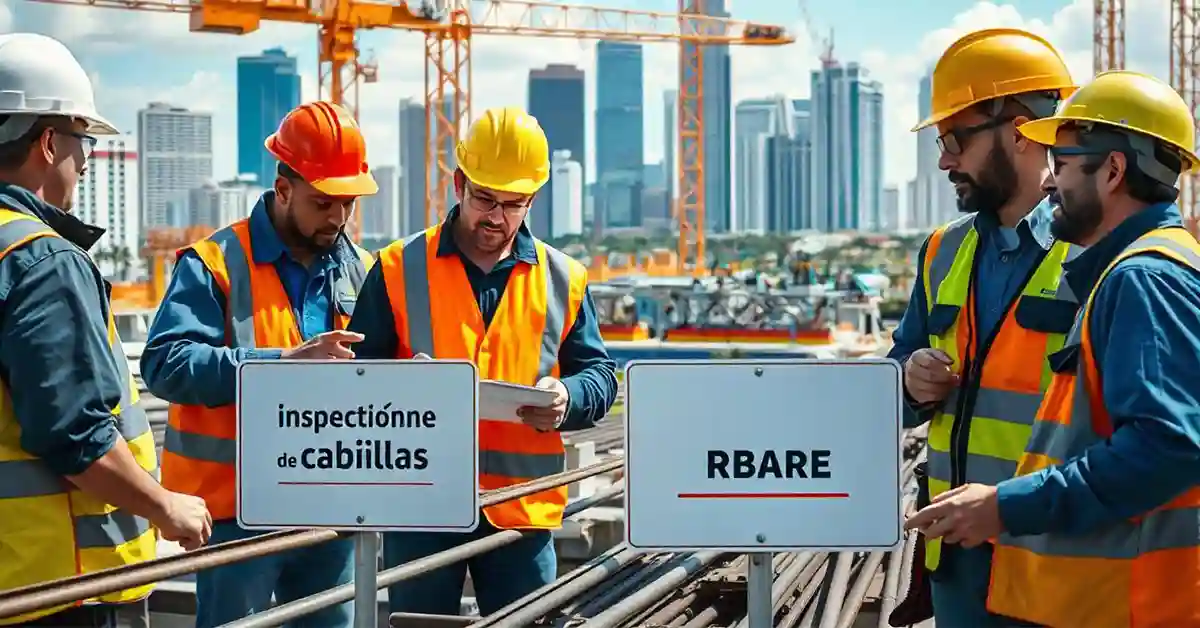The bustling construction scene in Miami thrives on precision and communication. Within this dynamic environment, understanding terminology, particularly in multiple languages, becomes crucial. For instance, translating technical terms related to rebar inspections can be challenging. These terms are pivotal in ensuring that all stakeholders, from contractors to translators, are aligned in their objectives.
How do you say “inspección de cabillas” in English, especially in Miami where bilingual communication is often necessary? This question highlights the importance of accurate translation in construction projects. The effectiveness of a translation can impact safety, compliance, and overall project success. With the diverse linguistic landscape in Miami, the need for clear and precise communication is more important than ever.
Let’s explore the translation of construction terms, focusing on bridging language gaps in Miami. We’ll highlight key benefits, solutions, and the impact accurate translation has on construction projects. Continue reading to discover essential insights that can enhance your understanding and practices in the field.
Understanding Rebar Inspection Terminology
Construction projects rely heavily on specific terminologies. Rebar, known as “cabillas” in Spanish, is a crucial component in reinforcing concrete structures. Ensuring clarity when discussing these vital elements is necessary for both safety and efficiency. Misunderstandings in terminology can lead to costly errors and safety hazards.
In Miami, where construction teams often consist of bilingual speakers, translating “inspección de cabillas” accurately is essential. This term translates to “rebar inspection,” a process vital for assessing the integrity and placement of reinforcing bars in concrete structures. Proper inspection ensures that structures meet safety standards and perform as intended.
By understanding these key terms, construction professionals and translators can ensure projects proceed smoothly. Clear communication helps prevent misunderstandings, delays, and potential safety issues during construction.
The Importance of Accurate Translation in Construction
Accurate translation in construction is vital for several reasons. It ensures that instructions are understood by everyone involved, reducing the risk of errors. In a multicultural city like Miami, language barriers can affect communication between team members, leading to potential project setbacks.
Translators play a significant role in bridging the language gap. They ensure that technical documents, safety protocols, and project plans are understood by all team members, regardless of their primary language. Accurate translation helps maintain consistency and compliance with local regulations and standards.
Investing in professional translation services for construction projects in Miami can improve efficiency and safety. By ensuring everyone is on the same page, projects can be completed on time and within budget.
Key Elements of Rebar Inspection
Rebar inspection involves several key elements that are crucial for ensuring the structural integrity of concrete constructions. These inspections typically focus on verifying the type, size, and spacing of rebar, as well as checking for proper installation and alignment.
Inspectors must ensure that the rebar is free from defects and corrosion, as these can compromise the strength and durability of the structure. They also check for adequate concrete coverage to protect the rebar from environmental damage.
By understanding these elements, project managers and inspectors can ensure that structures meet safety and performance standards. This knowledge is essential for achieving successful construction outcomes.
Steps for Conducting a Rebar Inspection
Conducting a rebar inspection requires a systematic approach. First, inspectors should review construction plans to understand the specifications for the rebar. This includes details on size, spacing, and placement.
During the inspection, each piece of rebar must be checked for compliance with these specifications. Inspectors should use measurement tools to verify spacing and alignment, and visually inspect the rebar for damage or defects.
After the inspection, a report should be generated detailing the findings. This report should include any issues identified and recommendations for corrective actions if necessary. Ensuring thorough inspections helps maintain structural integrity and compliance.
Challenges in Translating Technical Terms
Translating technical construction terms presents unique challenges, particularly in a multilingual environment like Miami. Different languages may have varying terms for the same construction elements, which can lead to confusion.
Additionally, some technical terms may not have direct translations, requiring translators to rely on context to convey meaning accurately. This can be particularly challenging with specialized terms like “rebar.”
To overcome these challenges, translators and construction professionals must work together to ensure accurate communication. They should create a glossary of standardized terms to minimize misunderstandings and enhance collaboration.
Enhancing Bilingual Communication in Construction
Effective bilingual communication is crucial for successful construction projects in Miami. To achieve this, teams must prioritize clear and consistent communication practices.
One strategy is to provide bilingual training to team members, ensuring everyone understands key terms and processes. This can include language courses or workshops focused on technical vocabulary.
Another strategy is to utilize bilingual documentation, providing project plans and safety protocols in both English and Spanish. This ensures that all team members have access to essential information, regardless of their primary language.
Building a Community of Construction Professionals
Building a community of construction professionals who are knowledgeable in both languages can enhance collaboration. This community can share best practices, resources, and experiences to improve communication and project outcomes.
Networking events, industry conferences, and online forums can provide opportunities for professionals to connect and exchange ideas. By participating in these communities, professionals can stay informed about industry trends and innovations.
Creating a supportive and collaborative environment can enhance the overall success of construction projects. By working together, professionals can overcome language barriers and achieve common goals.
The Role of Technology in Construction Translation
Technology plays an increasingly important role in construction translation. Tools like translation apps and software can facilitate communication by providing instant translations of key terms and documents.
These tools can be especially useful on-site, where quick access to translations can prevent misunderstandings and delays. However, it’s important to remember that technology should complement, not replace, human translators.
While technology offers convenience, human translators provide the expertise and context needed for accurate translations. By combining technology with human oversight, construction teams can enhance communication and project outcomes.
Ensuring Compliance with Local Regulations
Compliance with local regulations is a critical aspect of construction projects. In Miami, these regulations may vary depending on the language and cultural considerations of the community.
Translators must ensure that all project documents and communications align with local requirements. This includes translating safety protocols, building codes, and permits into the necessary languages.
By prioritizing compliance, construction teams can avoid legal issues and ensure that projects proceed smoothly. This commitment to adherence demonstrates professionalism and respect for the community.
Case Studies of Successful Bilingual Projects
Case studies of successful bilingual construction projects can provide valuable insights into best practices and strategies. These examples showcase how effective communication can lead to successful outcomes.
For instance, a Miami-based construction company successfully completed a large residential project by prioritizing bilingual communication. By providing training and resources in both languages, they ensured that all team members were informed and engaged.
Learning from these case studies can guide other construction professionals in implementing effective communication strategies. By applying these lessons, teams can enhance collaboration and project success.
FAQs With Answers
What is the English term for “inspección de cabillas”?
The English term for “inspección de cabillas” is “rebar inspection,” which involves checking the integrity and placement of reinforcing bars in concrete structures.
Why is accurate translation important in construction?
Accurate translation ensures that all team members understand project details, reducing errors and improving safety by aligning communication across languages.
How can technology assist in construction translation?
Technology, such as translation apps, provides instant translations of key terms and documents, facilitating communication on-site and enhancing efficiency.
What are key elements of rebar inspection?
Key elements include verifying rebar size, spacing, and alignment, checking for defects and corrosion, and ensuring adequate concrete coverage for protection.
How can construction teams improve bilingual communication?
Teams can improve communication by providing bilingual training, using bilingual documentation, and fostering a community of professionals knowledgeable in both languages.
Conclusion
In Miami, where diversity and construction intersect, effective communication is key to successful projects. By understanding terms like “inspección de cabillas” and prioritizing accurate translation, construction professionals can enhance safety and efficiency. The insights shared here aim to empower you to bridge language gaps in Miami’s construction scene. Continue learning and exploring to strengthen your skills and impact in this dynamic industry.




